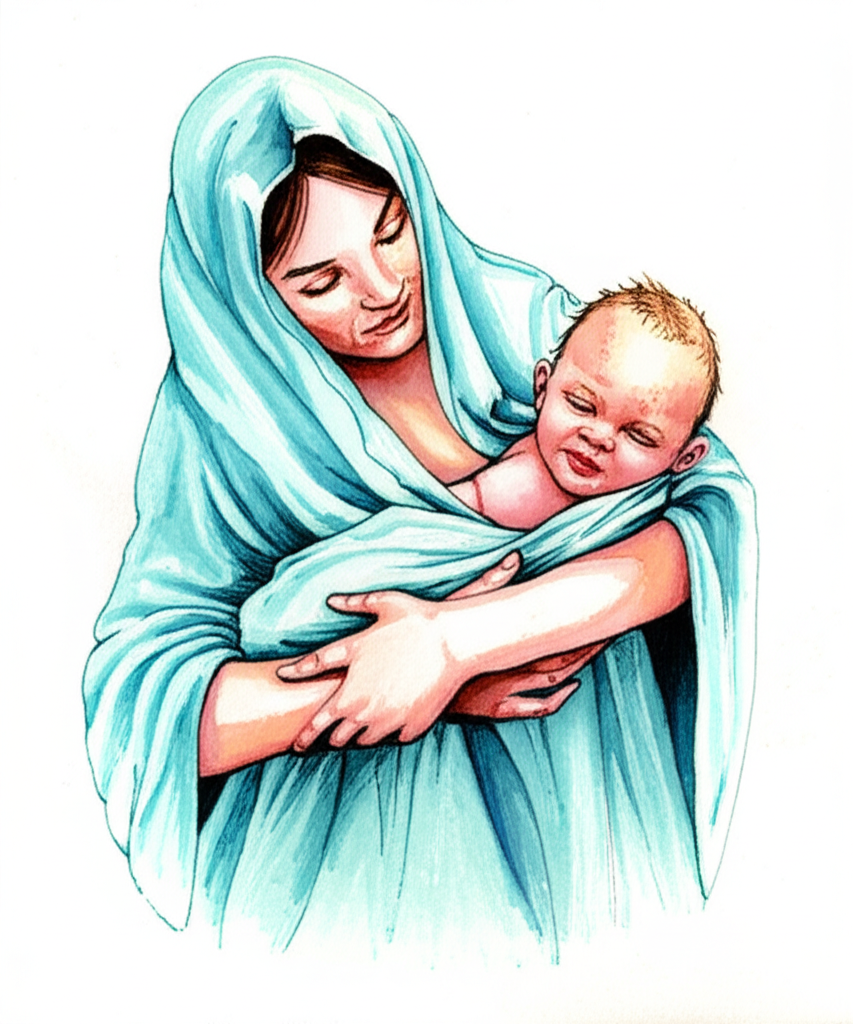
This blog post explores the historical superstition of wrapping a newborn child in its mother’s clothes until the baby has been baptized, a custom steeped in folklore, religious beliefs, and the harsh realities of infant mortality in past centuries.
Historical Background:
While less prevalent in modern society, the practice of wrapping newborns in their mother’s clothing was once widespread, particularly in Europe. The decline in baptism rates, especially in countries like the UK and America, indicates a significant shift from the era when this custom was commonplace. During the Middle Ages, baptism was typically conducted within a week of birth. This urgency stemmed from the belief that unbaptized infants who died would exist in ’limbo of infants’ – a theological concept describing a state for those tainted by original sin but too young for personal sins.
In Scandinavian folklore, similar beliefs existed, positing that the souls of unbaptized infants transformed into will-o’-the-wisps, ethereal lights drifting over marshlands. These beliefs underscore the deep-seated anxieties surrounding infant mortality and the fate of their souls.
Cultural Beliefs and the Fear of Infant Mortality:
Between 30 and 50 percent of medieval babies died in infancy, frequently in the days immediately following birth, due to infections and diseases beyond the comprehension or prevention capabilities of medieval medicine. This high infant mortality rate, coupled with the aforementioned fearsome beliefs about the afterlife of unbaptized children, heavily influenced families’ reliance on superstitious practices. These practices aimed to protect their vulnerable offspring during this perilous period.
The Tradition and Its Symbolic Significance:
The tradition of wrapping a newborn in its mother’s clothes was rooted in the hope that malevolent spirits would perceive the infant as an extension of the mother, thus deterring them from harming the child. This approach relied on deceiving supernatural forces by blurring the boundaries between mother and child.
Evolution of the Superstition Over Time:
Alongside the mother’s clothing, other protective measures were commonly employed. These included placing communion wafers and iron amulets in the crib, tying red string around the baby’s wrist, and even placing knives near the child, as evidenced by the following rhyme:
Let the superstitious wife, Near the child’s heart lay a knife, Point be up, and haft be down; While she gossips in the town. This ’mong other mystic charms Keeps the sleeping child from harms.
These practices illustrate the diverse range of beliefs and objects thought to possess protective powers.
The rationale was also linked to protection from fairies, who were believed to covet beautiful human babies and replace them with their own deformed offspring, known as changelings. Before advancements in genetics could explain congenital disorders and birth abnormalities, parents often attributed such variations to fairy intervention.
Modern Interpretations:
While the literal practice of wrapping a newborn in its mother’s clothes until baptism is largely obsolete, echoes of the underlying beliefs persist. The desire to protect newborns remains strong, although expressed through modern medical practices and parental care rather than superstitious rituals. The historical context of this superstition offers insights into the anxieties and beliefs of past generations, highlighting the enduring human desire to safeguard the most vulnerable members of society.